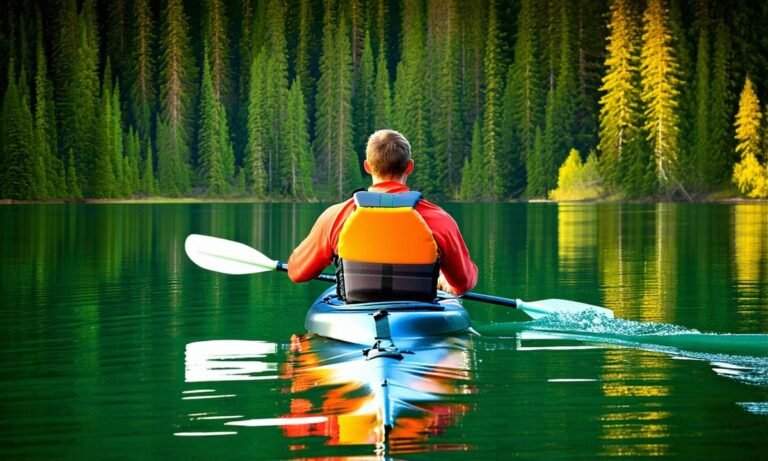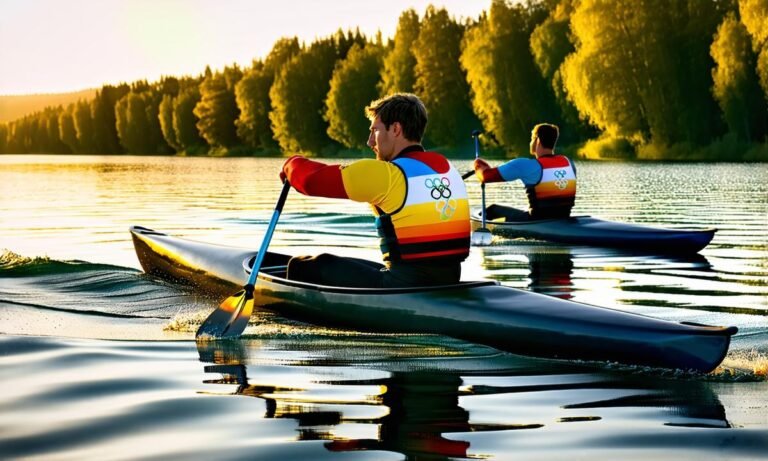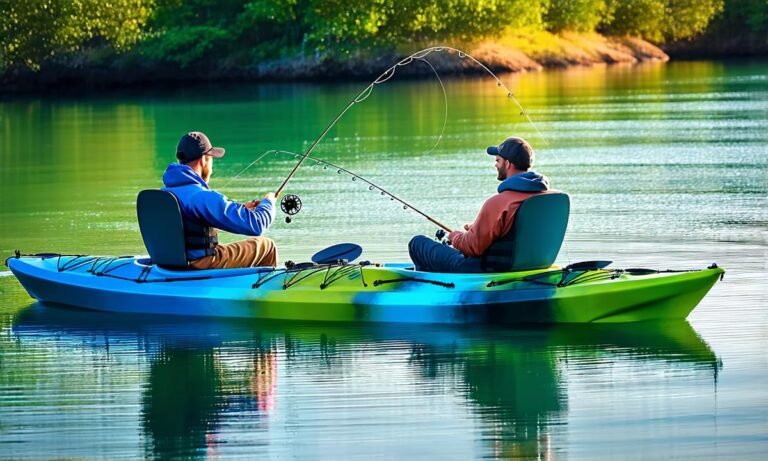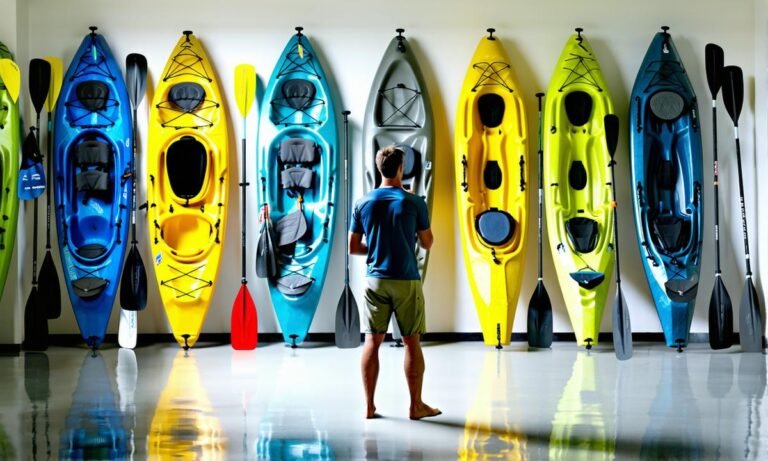Fishing Kayaks: Top 5 Picks for Ultimate Angling Adventures
Fishing kayaks offer a thrilling way to connect with nature while enjoying the sport. They provide access to remote waters, allowing anglers to reach those hidden spots that often hold the biggest catches.
Are fishing kayaks worth it? Absolutely. These lightweight vessels combine maneuverability and stability, making them ideal for both beginners and seasoned fishermen alike. With options ranging from sit-on-top models to sleek touring designs, there’s something for everyone.
Stay tuned as I share tips on selecting the right kayak, effective gear recommendations, and strategies that can elevate your fishing experience. The world of fishing kayaks is full of possibilities just waiting for you!
How to Choose the Right Fishing Kayak for Beginners?
Selecting the right fishing kayak can feel daunting, especially for beginners. With an array of styles and features available, understanding your needs will simplify this choice.
First, consider what type of water you plan to fish in. Will it be calm lakes or flowing rivers? Different kayaks are built for different environments. For instance, sit-on-top kayaks are perfect for warm weather and flat waters since they provide excellent stability and easy access when landing a catch.
Consider Your Weight Capacity
Before making a purchase, check the weight capacity of any kayak you’re eyeing. A good rule of thumb is to opt for a model that holds at least 100 pounds more than your total gear and body weight combined. This gives you extra wiggle room on those long days out on the water.
Look for Stability Features
Stability in a kayak ensures peace of mind while casting lines or reeling in fish. Wider hulls offer better balance—something vital as you maneuver with both rod and paddle at hand. A well-designed kayak helps prevent tipping during unexpected splashes or waves.
“A comfortable angler is often a successful one.” — Sarah Johnson, Outdoor Enthusiast
Paddle Comfort Matters
Your paddle should feel like an extension of yourself while fishing from the kayak. Lightweight paddles reduce arm fatigue during lengthy excursions. Additionally, adjustable paddles can accommodate various stroke styles based on personal preference.
Sufficient Storage Space
You’ll need space not just for your tackle box but also snacks and other personal items while out on longer trips. Look for kayaks that include built-in hatches or compartments to keep belongings secure yet accessible during fishing sessions.
| Kayak Model | Weight Capacity (lbs) | Type |
|---|---|---|
| Perception Pescador Pro | 400 | Sit-On-Top |
| Old Town Topwater Angler Kayak | 450 | Sit-On-Top |
| Native Watercraft Slayer Propel XC10 Kayak | 425 | Pedal Drive |
The investment made towards finding your ideal fishing kayak pays off once you’re comfortably paddling toward your favorite spots! Making informed choices now means more fruitful adventures later down the line!
Top 5 Features that Enhance Your Fishing Kayak Experience
Fishing from a kayak can be an exhilarating experience, especially when your vessel is equipped with the right features. These enhancements not only ensure comfort but also help increase your chances of landing that prized catch.
The Importance of Comfort and Ergonomics
A fishing kayak should feel like a second home on the water. The seating system plays a major role in this. Look for kayaks with adjustable seats that provide lumbar support and adequate cushioning to stay comfortable during long fishing trips. According to a study by the American Canoe Association, ergonomic seating reduces fatigue significantly, allowing you to focus on fishing instead of discomfort.
Accessibility and Storage Options
Efficient storage solutions make a huge difference while kayaking. Consider models featuring built-in hatches or removable gear trays that keep tackle boxes organized and easily accessible. A helpful feature is rod holders; they free up your hands for other tasks while keeping your rods secure. Anglers often mention how vital it is to have everything within reach, enhancing their overall experience.
Maneuverability: A Key Factor
Your kayak’s design impacts its maneuverability in various waters. A shorter length typically offers increased agility while navigating tight spots or around obstacles like fallen trees or lily pads. Wider hulls afford more stability, which is essential when reeling in larger fish or dealing with rough waters. Sit-on-top designs tend to combine both stability and easy access for anglers wishing to land fish quickly without tipping over.
“Maneuverability can mean the difference between success and frustration on the water.” — Mark Smith, Professional Fisherman
Durable Materials for Longevity
Selecting kayaks made from high-quality materials, such as polyethylene or fiberglass ensures greater durability against rocky shorelines and harsh weather conditions alike. Many high-end models come with UV-resistant coatings that prevent fading over time—an important consideration if you’re planning frequent outings on sunny days.
| Feature Type | Importance Rating (1-10) | Benefits |
|---|---|---|
| Comfort Seating System | 9 | Reduces fatigue during extended trips. |
| Storage Solutions | 8 | Keeps gear organized and accessible. |
| Maneuverability Design | 7 | Easier navigation through dense areas. |
The combination of these five key features allows you as an angler to optimize every moment spent fishing from your kayak! When you prioritize comfort, accessibility, maneuverability, and material durability, you enhance your overall fishing experience.
3 Advanced Techniques for Successful Kayak Fishing Trips

Kayak fishing can be an amazing adventure, but mastering it may require techniques that go beyond the basics. Here are three advanced methods to boost your success on the water.
Utilize Live Bait for Better Results
Live bait is often more appealing to fish than artificial lures. Selecting the right kind of live bait increases your chances of attracting various species. For instance, minnows or nightcrawlers work wonders in freshwater lakes while using shrimp or crabs is ideal for saltwater fishing.
- Select Your Bait Wisely: Different fish respond to different baits; research what’s effective in your area.
- Keep Bait Fresh: Ensure your live bait stays lively by keeping it cool and hydrated during transport.
- Mimic Natural Movement: Use lighter tackle with less resistance to allow more natural movement through the water.
“Using live bait can significantly enhance a day of fishing.” — Mike Thompson, Professional Angler
The Right Anchor System Makes All The Difference
A quality anchoring system eliminates drifting and helps keep you positioned over productive spots. Consider using a lightweight drag chain anchor which provides stability without adding much weight to your kayak. This technique allows precision casting while also preventing unwanted movement caused by wind or current.
| Anchor Type | Weight (lbs) | Best Use Case |
|---|---|---|
| Drag Chain Anchor | 1-2 lbs | Calm waters & light currents |
| Grapnel Anchor | 3-4 lbs | Strong currents and deeper waters |
This simple adjustment keeps you anchored near optimal fishing zones where fish are likely feeding, maximizing your success rate throughout the trip!
Trolling Techniques for Covering More Water
Trolling from a kayak can effectively cover large areas quickly, increasing opportunities to connect with fish actively feeding at different depths and locations. Trolling motors or simply paddling slowly while trailing line behind you offers versatility when looking for bites.
- Select Varied Depths: Adjust how deep you let out your line based on water conditions—fish often swim at varied depths depending on light levels and temperature changes throughout the day.
“Trolling gives anglers access to parts of lakes they can’t reach otherwise.” — Amanda Lee, Marine Biologist specializing in freshwater ecosystems.
This approach adds excitement by enabling exploration as well as engagement with nature—ultimately enhancing overall enjoyment during each kayaking outing!
FAQs
What should I pack for a kayak fishing trip?
Bring essentials like your fishing gear, snacks, water, sunscreen, and a first-aid kit. Don’t forget personal items such as proper clothing and a hat to protect yourself from sun exposure during your outing.
How do tides affect kayak fishing locations?
Tides play a crucial role in fish activity. During high tide, fish often move into shallower areas seeking food. Plan trips around tide schedules to increase chances of catching more species at favorable times.
Can I modify my kayak for better fishing?
Yes! Adding accessories like rod holders, storage bags, or even an anchor system can enhance your setup. Customizing features can significantly improve comfort and efficiency while out on the water fishing.




